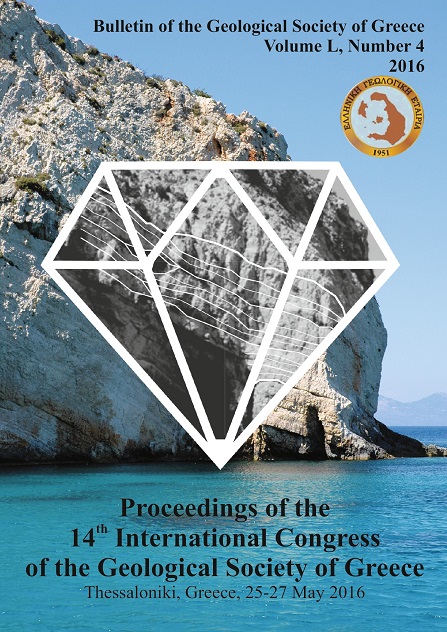DETERMINATION OF SILICA POLYMORPHS AND FELDSPARS IN INDUSTRIAL SAMPLES OF BENTONITE AND PERLITE

Abstract
The aim of the present study is to apply a fast and reliable XRD method to identify the percentage of silica polymorphs and feldspars that industrial bentonite and perlite may contain, because these gangue minerals influence the quality of the final products. The current research was implemented by selecting of appropriate almost pure reference samples of bentonite and perlite in which specific amount of silica polymorphs and feldspars was added. The selection of all samples was based on the X-ray diffraction patterns. The synthetic mixtures produced were either with bentonite or perlite with a single added mineral or with two of them in percentages up to 10%. The minerals added to the reference samples were distinguishable in the XRD patterns in different percentages for each mineral added, but also in the two different reference samples. After evaluating of the XRD patterns of a series of samples, it was concluded that the lowest percentage of silica polymorphs and albite that was detected in the reference bentonite was 0.5% quartz, 1% cristobalite 10% opal CT, and 1% albite, whereas the percentages for the reference perlite was 1% quartz, 2% opal-CT, 1% cristobalite and 0.5% albite. This method can beapplied to any commercial bentonite and perlite bulk sample to define its purity concerning its silica polymorph and feldspar content.
Article Details
- How to Cite
-
Kaza, T., & Stamatakis, M. (2016). DETERMINATION OF SILICA POLYMORPHS AND FELDSPARS IN INDUSTRIAL SAMPLES OF BENTONITE AND PERLITE. Bulletin of the Geological Society of Greece, 50(4), 1878–1886. https://doi.org/10.12681/bgsg.11927
- Section
- Petrology and Mineralogy

This work is licensed under a Creative Commons Attribution-NonCommercial 4.0 International License.
Authors who publish with this journal agree to the following terms:
Authors retain copyright and grant the journal right of first publication with the work simultaneously licensed under a Creative Commons Attribution Non-Commercial License that allows others to share the work with an acknowledgement of the work's authorship and initial publication in this journal.
Authors are able to enter into separate, additional contractual arrangements for the non-exclusive distribution of the journal's published version of the work (e.g. post it to an institutional repository or publish it in a book), with an acknowledgement of its initial publication in this journal. Authors are permitted and encouraged to post their work online (preferably in institutional repositories or on their website) prior to and during the submission process, as it can lead to productive exchanges, as well as earlier and greater citation of published work.



